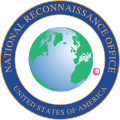 STEX during ground-testing | |
| Names | STEX USA 140 NROL-8 |
|---|---|
| Mission type | Technology demonstration |
| Operator | NRO |
| COSPAR ID | 1998-055A |
| SATCAT no. | 25489 |
| Spacecraft properties | |
| Manufacturer | Lockheed Martin |
| Launch mass | 539.4 kg (1,189 lb) |
| Start of mission | |
| Launch date | 10:04:49,October 3, 1998(UTC) |
| Rocket | Taurus (rocket) |
| Launch site | Vandenberg AFB |
Space Technology Experiments, or STEX, also known as NRO Launch 8 or NROL-8, was an experimental National Reconnaissance Office (NRO) satellite built by Lockheed Martin. It was launched on 3 October 1998. [1] One of the experiments was ATEx (Advanced Tether Experiment), which was deployed on 22 January 1999, and subsequently jettisoned. [2]

